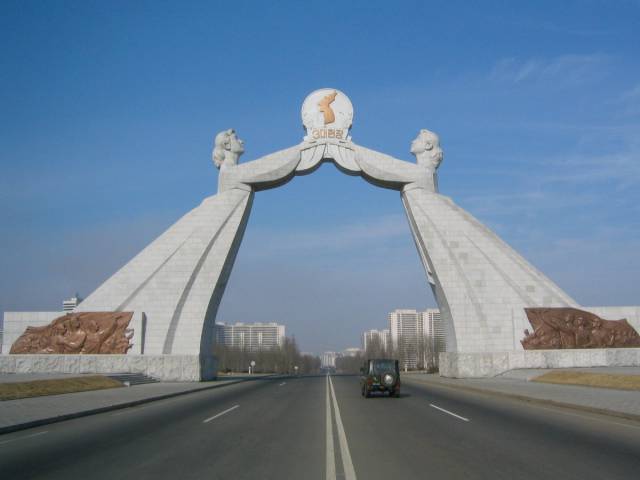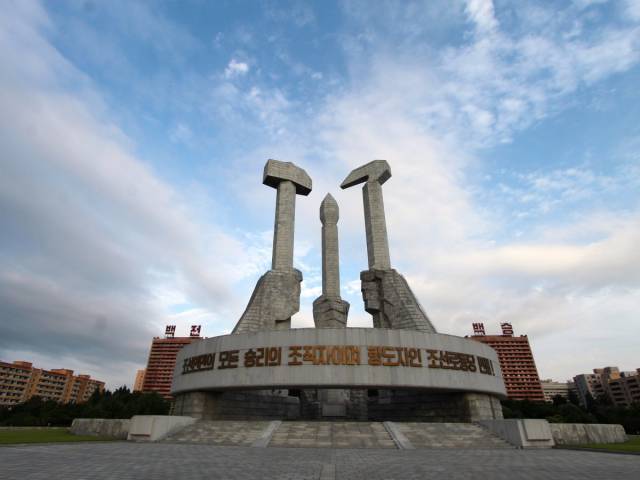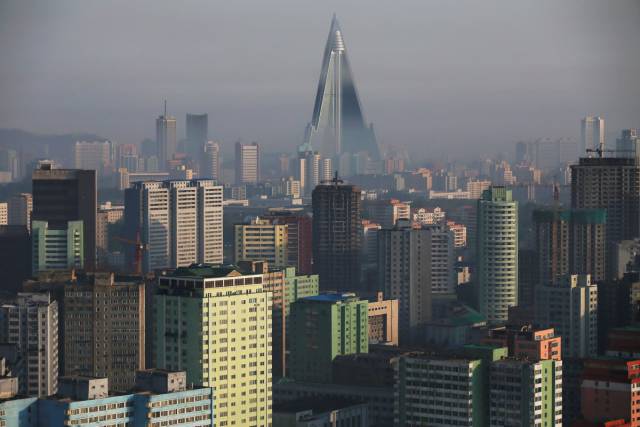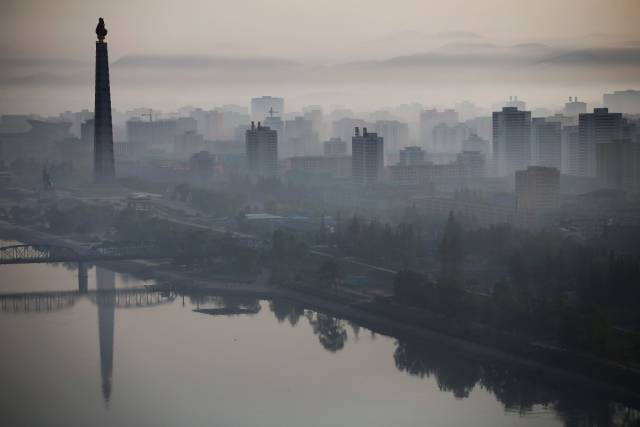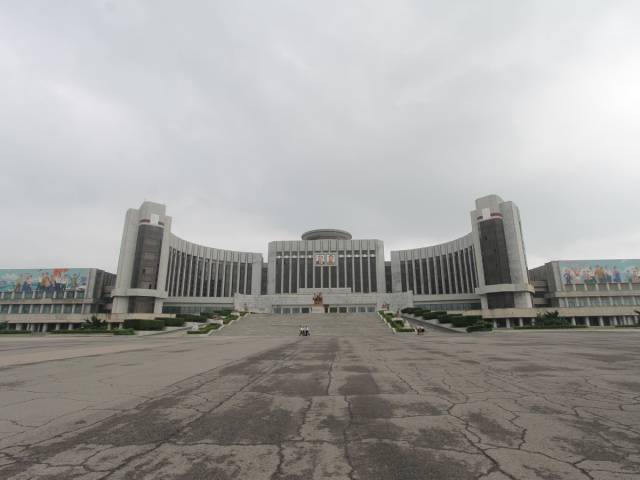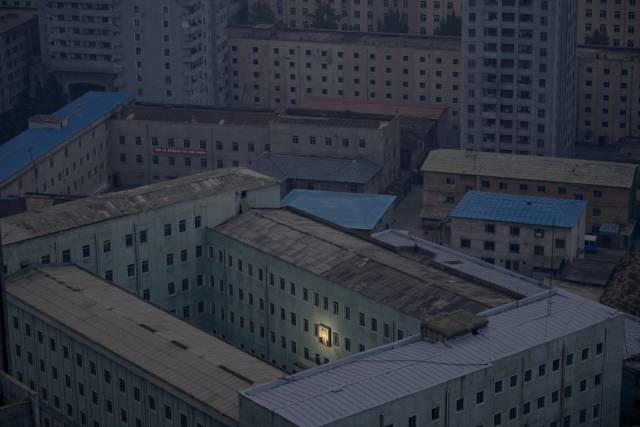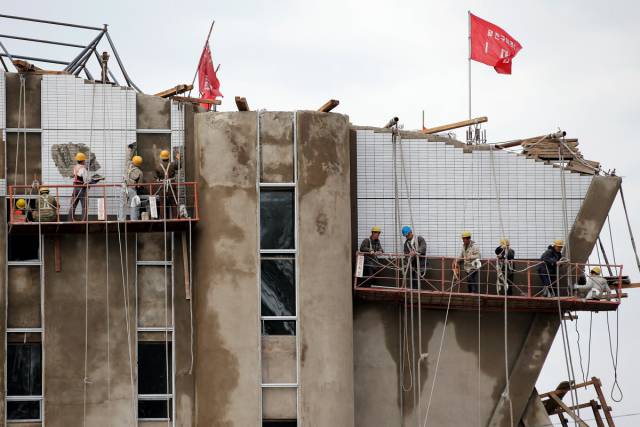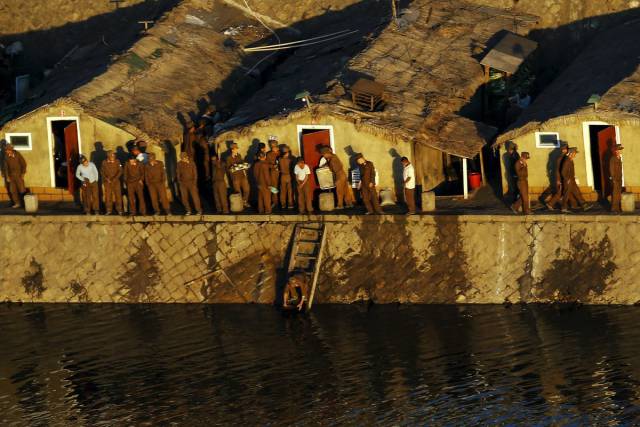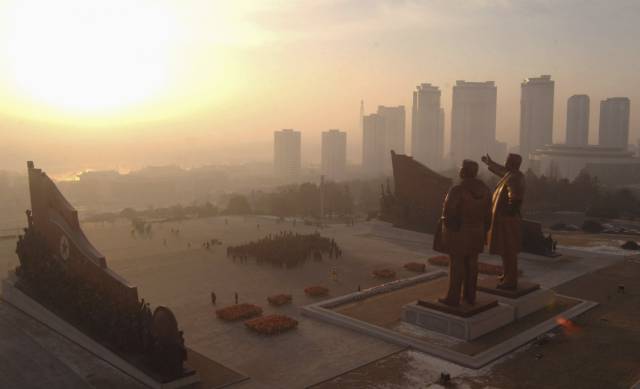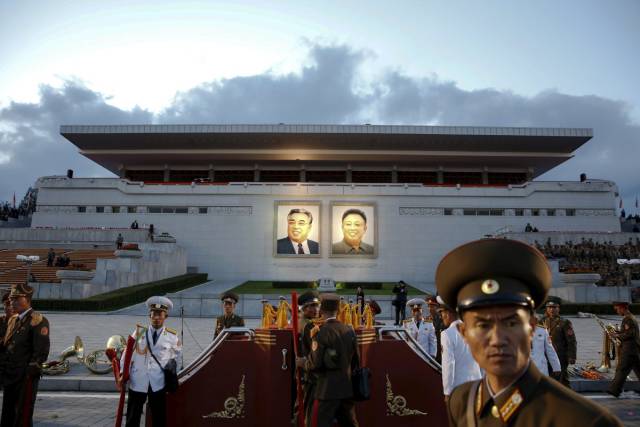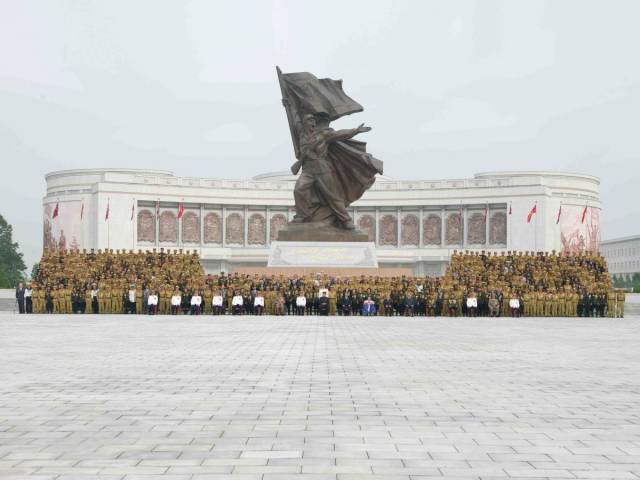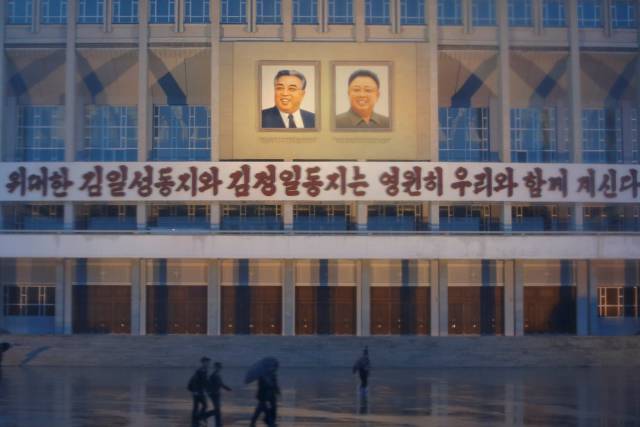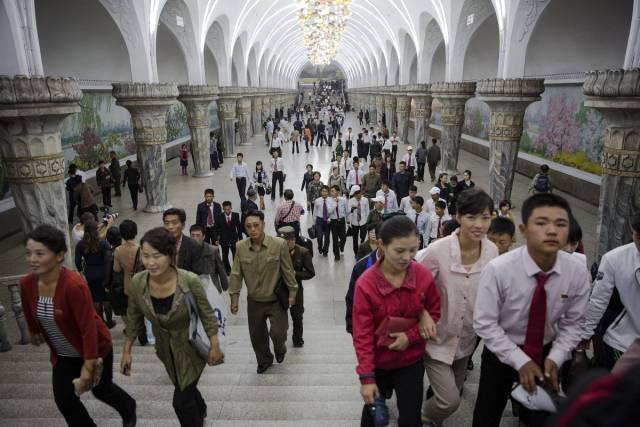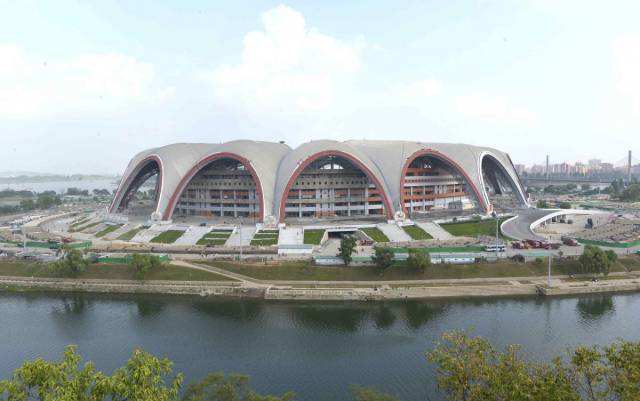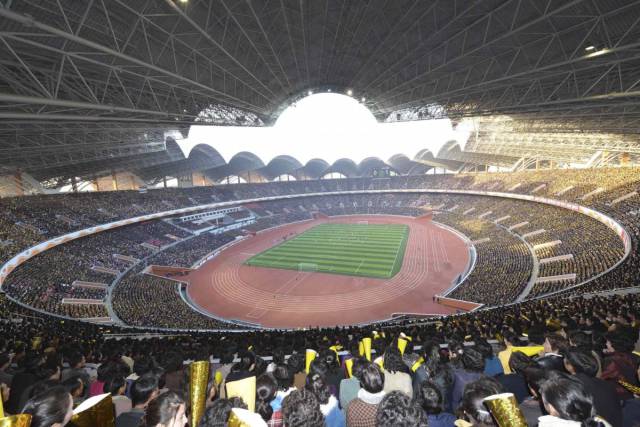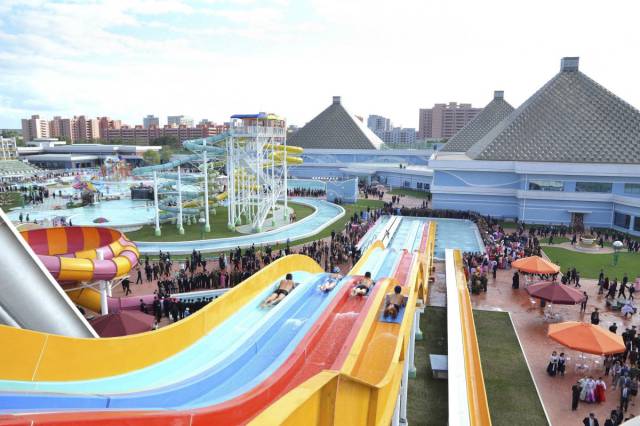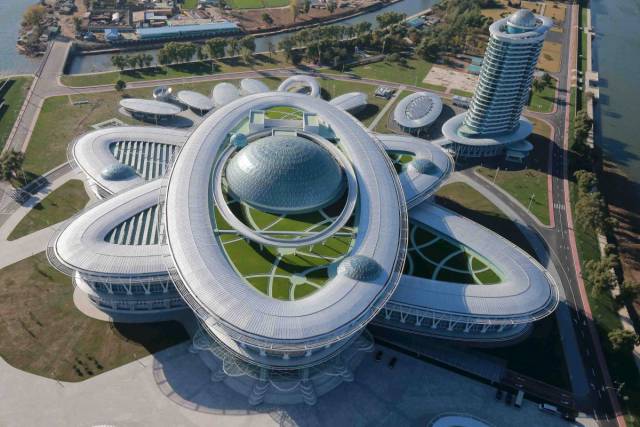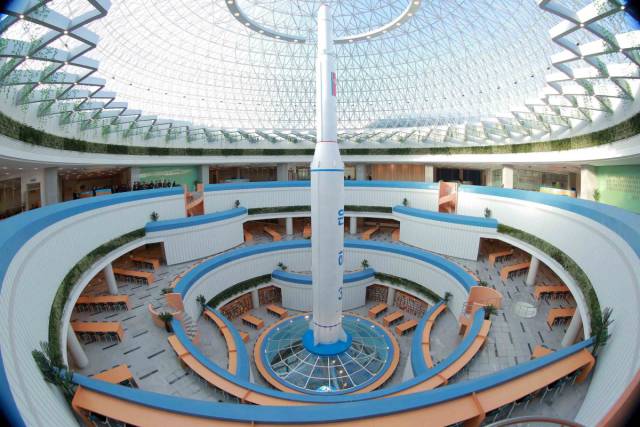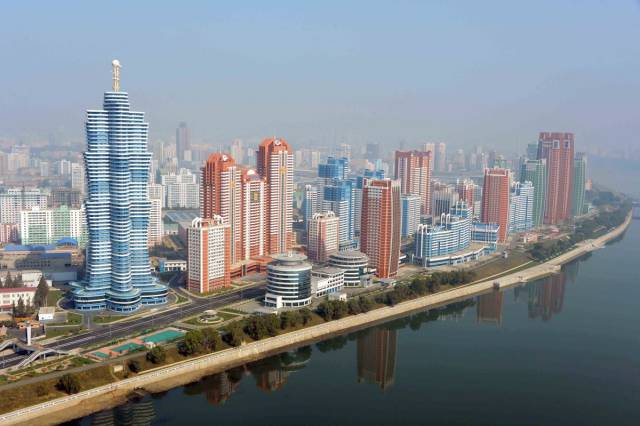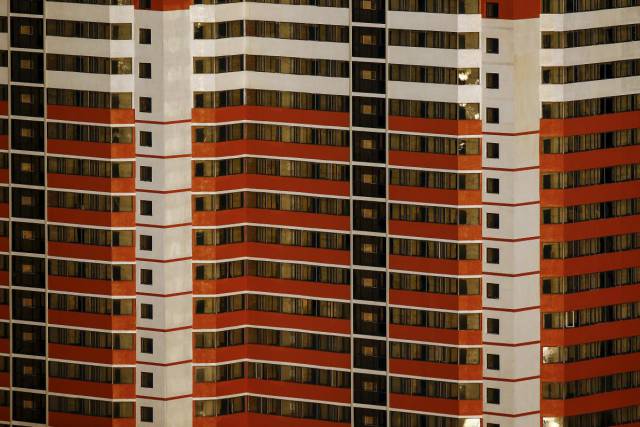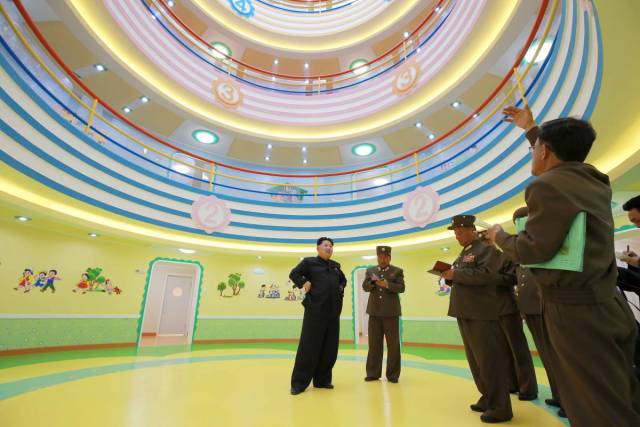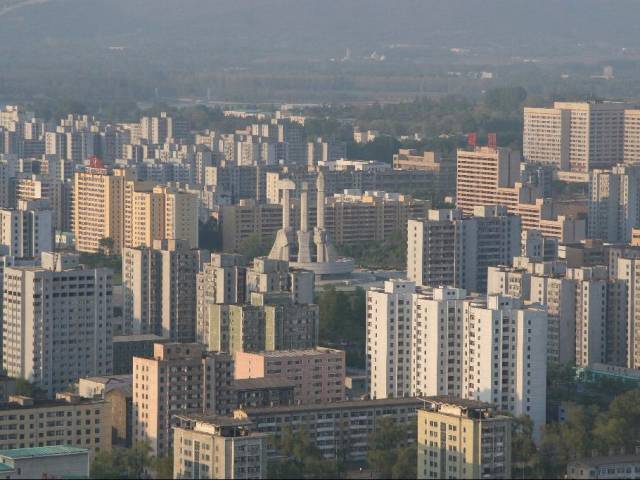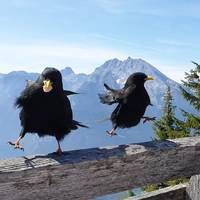Entering the capital city of Pyongyang, visitors pass through the Arch of Reunification. The two women holding a conjoined North and South Korea symbolize supreme leader Kim Il Sung's vision for the two countries.
Immediately, visitors are struck by the Workers' Party Monument. The outer belt reads, "Long live the Workers' Party of Korea, the organizer and guide of all victories of the Korean people!"
Downtown Pyongyang's skyline is punctuated by the 105-story Ryugyong Hotel, currently the tallest abandoned building in the world. It hasn't had any work done on it since 1992.
On the other side of the city, the 558-feet-tall Juche Tower looms above the Taedong River.
Some of North Korea's most impressive (and intimidating) architecture lives in the city center, such as the sprawling Manyongdae Children's Palace. It features two "arms" meant to imitate a mother's embrace.
North Korea doesn't have enough of its own electricity, so at night the entire country goes pitch black. What little remains goes toward illuminating a picture of the country's founder, Kim Il-Sung.
These buildings wouldn't be possible without the thousands of laborers who are forced to work long hours to build them.
The conditions are often poor, if not downright treacherous.
Much of the country's architecture is meant to honor North Korea's leaders, Kim Il-Sung, who led between 1972 and 1994, and Kim Jong Il, who followed Sung until his own death in 2011.
The two men are proudly memorialized all around Pyongyang, most obviously at the People's Grand Assembly Hall.
Nearby is the Fatherland Liberation War Museum, which celebrates Korea's victory over the imperialist American forces during the Korean War.
One building in central Pyongyang reads, "The great comrades Kim Il Sung and Kim Jong Il will be with us forever."
Disregarding the blatant propaganda, there are many aspects of North Korean architecture that are genuinely impressive. The metro station is among the most ornate in the world.
Perhaps unsurprisingly, North Korea is also home to the largest sports arena in the world, May Day Stadium.
Filled to capacity, it's capable of holding 150,000 people. Most often, it's used for the annual Mass Games, which pay tribute to the country's history.
Amid the bleakness of everyday life, people also manage to find time to have fun at the Munsu Water Park.
Science also plays a big role in North Korea. The Sci-Tech Complex, for example, was built in the shape of an atom and opened in early 2015.
The country's leader, Kim Jong Un, has said he hopes the center will help "advance the establishment of a rich and powerful fatherland through the locomotive of science and technology."
The structure joins the Mirae Scientists Street, which North Korea wants to use as its hub for becoming a global force in innovation.
Some apartment buildings sport solar panels.
Many of the buildings stand out for their bold color palettes and industrial feel.
But others, like the Wonsan Baby Home and Orphanage, opt instead for bright pastels.
Completed in June of 2015, the home is spread across several floors. Its blues and yellows stand in stark relief to the concrete that dominates so much of North Korea's landscape.
Whatever bright spots there may be, from far away the skyline clearly reveals North Korea's obsession with power and might.

